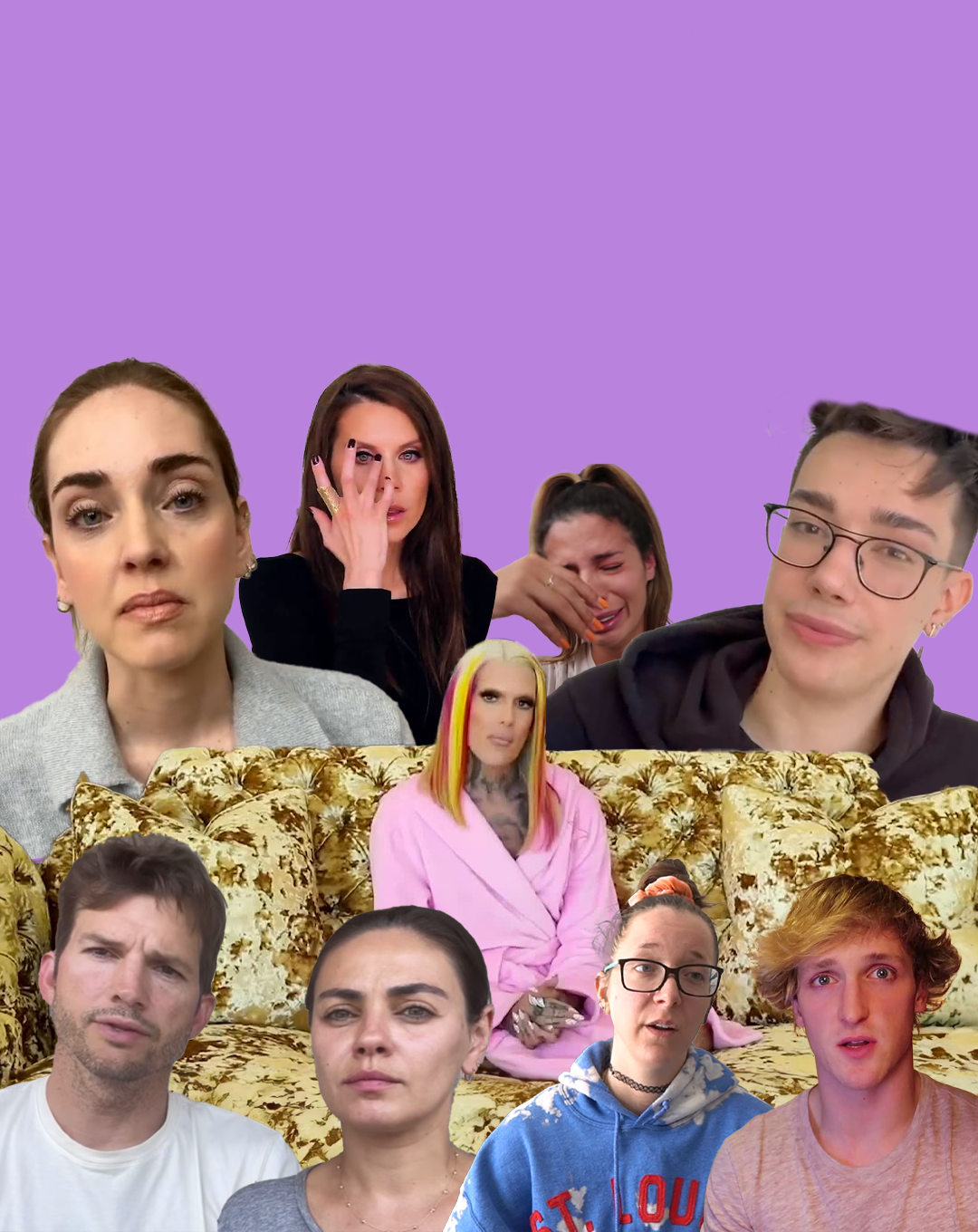
Why are all the star apology videos the same? From Chiara Ferragni to Ashton Kutcher via Logan Paul
Have you ever noticed how influencers all have a distinctive inflection in their voice when speaking into a camera? A typical way of emphasizing words and the end of sentences, often accompanied by simplified syntax of short propositions, repeated words, big smiles, and well-timed pauses. In essence, it's a meticulously crafted communicative style, designed to appear spontaneous yet empty, and above all, to keep the audience's attention. It's a form of code-switching that now feels natural, absorbed unconsciously, and has become the quintessential way content creators speak, to the point that they may not even be aware of it anymore. To them, it simply seems effective (and it is), so they continue to use it, imitating each other. In particular, the high rising terminal, emphasizing the end of words and sentences, works well for three reasons: it makes them recognizable while scrolling, makes the videos seem incomplete, prompting us to want to know more and piquing our curiosity, and finally, it makes us feel more engaged in the content, almost as if the person speaking is asking us something.
@etymologynerd Unusual methods of phonation, like glottal fry or breathiness, also help retain viewers, and I could do an entire follow-up video on that The uptick is called "High Rising Terminal," or HRT, and I recently did a video on how it's used in frat bro sociolects, which you can see here: @etymologynerd I'm very aware that I do this too, and at this point it feels more natural than talking normally to the camera. I've been wanting to make this video for a while so I could call attention to the phenomenon #linguistics #dialect #language #sociology #influenceraccent original sound - etymologynerd
Apology Videos
When the usual sales, sponsorship, or self-narrative content gives way to an apology video, things change considerably. Typically, creators, as well as film and television stars, carefully study this type of post. The motivation is simple: it must be effective, show remorse, and also evoke a sense of sadness in viewers. It must seem genuine and sincere, bringing them closer to the audience and making them forgivable. The stylized elements are now well-known. After all, we've seen plenty of apology videos since the YouTube era: a sad look, non-existent but exaggerated tears, to be squeezed out while speaking, reddened eyes, and a hoarse voice. Very little makeup, sometimes used to emphasize dark circles, simple clothes (perhaps in a slightly striking color), and somewhat unkempt hair. Additionally, there are more dramatic elements. One in particular? Always choose a backdrop that appears neglected and doesn't flaunt wealth or luxury. Communication isn't just words; it's a combination of other impulses and variables, from gestures onward, and these professionals know it very well. That's why delicate content like an apology video is often much more carefully curated than a vlog. The difference? The care is disguised to convey authenticity, a sense of urgency, humility, or whatever is beneficial to the personal brand in that specific situation.
Not Just Chiara Ferragni
And it doesn't matter what offense has been committed. Whether filming corpses (Logan Paul), ending a friendship with a creator (Tati Westbrook and James Charles), being racist or misogynistic (Laura Lee and Jeffree Star), mistreating a fish (Jenna Marbles), or being ambiguous in the communication of a charity campaign and getting fined (Chiara Ferragni), everything is addressed in the same way. With dark circles and a hoarse voice. We're not saying that no apology video has ever been sincere in the history of social networks. What we want to emphasize is that apology videos have now become a genre of content in themselves, akin to Get Ready With Me, ASMR, and mukbang. A genre that is often subtly manipulative. So much so that memes and even academic articles on these communication choices, somewhere between serious and humorous, abound on the internet.
Understanding and Interpreting the Influencer Phenomenon Fully
The influencer sphere, with its specificities and impressive speed and pervasiveness, is changing how we experience social networks, create content, and interact with brands and advertising, both as customers and users. As targets, consumers, and crucial actors in the attention economy, we must be aware of our role and that of influencers, their techniques, and characteristics, to navigate the new internet in the most conscious way possible and make informed choices, for better or for worse.

























































